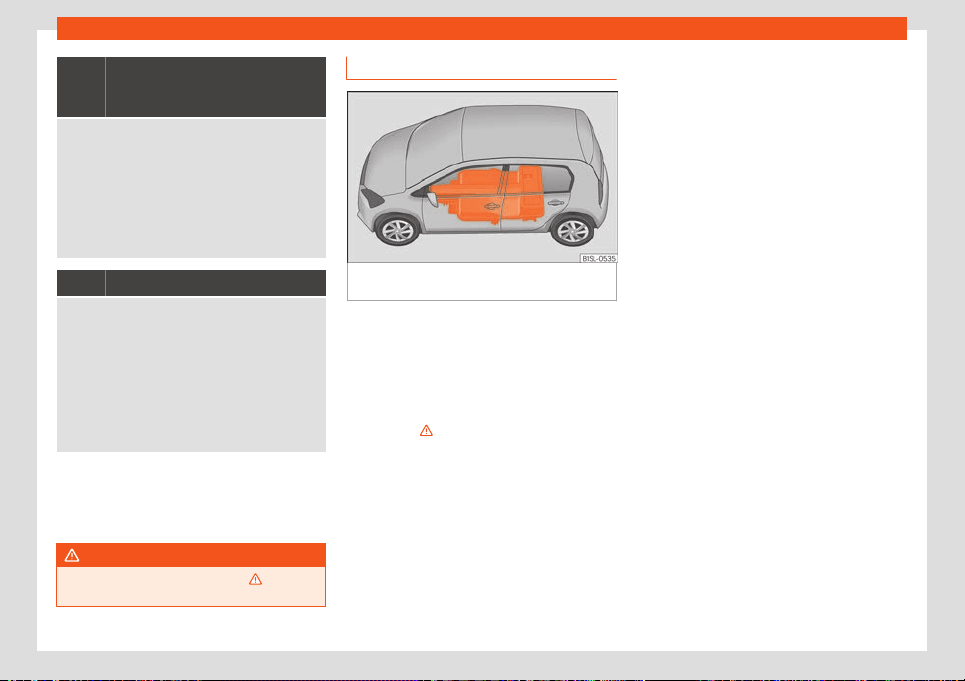Loading ...
Loading ...
Loading ...

High-voltage battery
Its lights up yellow. A text mes-
sage will also appear on the in-
strument panel display.
The
Eco or Eco+ driving profile will be activ
e. The
power is reduced and certain consumers are auto-
matically switched off, such as the air conditioning
system. The vehicle may already be travelling in re-
serve mode.
The high-voltage battery charge has reached the re-
serve level. The vehicle autonomy will only be of a
few kilometres.
Charge the high-voltage battery immediately.
Its lights up yellow.
The power is reduced and there is very little autono-
my.
A text message will al
so appear on the instrument
panel display.
The maximum speed is limited to 80 km/h (50 mph).
The Eco+ driving profile will be active.
The high-voltage battery is discharged. There is only
sufficient autonomy for a few hundred metres. Stop
the vehicle in a safe place. Charge the high-voltage
battery immediately.
The control lamps light up together when the
ignition is s
wit
ched on and shoul
d turn off af-
ter approximately 2 seconds. This is the time
taken for the function check.
WARNING
Observe the safety warnings
›››
in Con-
trol and warning l
amps on page 66.
Introduction
Fig. 147
On the vehicle floor: location of the
high-v
olt
age batt
ery.
The vehicle’s electric engine is operated by
the high-v
olt
age batt
ery, which is located on
the vehicle floor
›››
Fig. 147.
The high-voltage battery can either be
charged immediately or programmed
›››
page 167. Always bear in mind the safety
warnings
›››
.
Bef
or
e char
ging the battery, disconnect the
drive system
›››
page 137.
Charge options
●
Charge from a power socket or a charging
station (“alternating voltage”)
›››
page 164
●
Home charging station (wallbox) (“alternat-
ing voltage”)
›››
page 166
●
Fast charge at a charging station (“direct
current”)
›››
page 165
To charge the high voltage battery with alter-
nating current, SEAT recommends using an
alternating current charging station with
more than 3.6 kW. This charging method is
more efficient than using a socket.
Protection against fault current
The vehicle is fitted with a device to provide
protection against fault direct current (fault
DC current). This avoids the fault DC cur-
rents, which may be caused during charging,
to reach the electrical installation of the
home through the charging cable and for
them to damage the operation of the differ-
ential switch (in Germany, for example, the
differential switch is A type) while charging.
Night power rates
There are electricity suppliers that offer
cheaper night power rates that can be used
to charge the high-voltage battery. To take
advantage of these periods of time, it is possi-
ble to programme the preferred time for
charging the vehicle using the Energy man-
agement or at the home charging station
(wallbox).
High-voltage battery warranty
The warranty covering new SEAT vehicles al-
so includes the vehicle’s high-voltage battery
›››
page 196.
»
161
Loading ...
Loading ...
Loading ...